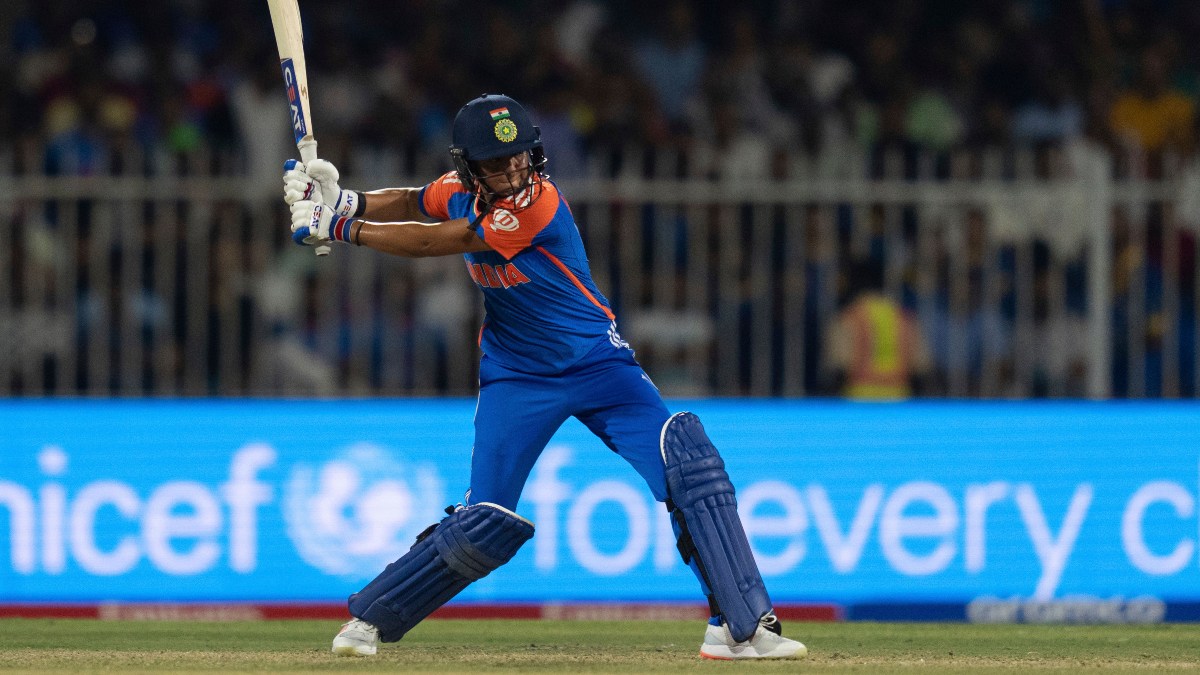The more things change, the more they stay the same. The saying holds true for the Indian women’s cricket team when it comes to facing Australia in the Women’s T20 World Cup at the very least. The Australians had dashed a billion Indian hearts in the last two editions of the ICC’s showpiece women’s T20 event – in the final in 2020 and the semis three years later.
On Sunday, the Australians triumphed yet again against the Women in Blue , this time in the group stage. Their previous victories over India had been knockout blows and the one in Sharjah over the weekend leaves the Harmanpreet Kaur-led side dependent on other teams for them to scrape through to the semi-finals.
And unlike the semi-final in Cape Town in February last year, skipper Harmanpreet Kaur wasn’t run-out in the most unfortunate manner at the most crucial stage of the chase. The Mumbai Indians captain managed to stay at the crease till the very end, producing the standout innings of the evening by becoming the only batter from either team to go past fifty.
Australia’s resilience trumps Harmanpreet’s bravery
It certainly was a gem of a knock by Harmanpreet, given how she stood tall and took the game deep even after India lost both openers inside the powerplay, as well as Deepti Sharma and Richa Ghosh in a space of a few deliveries around the 16th over. Harman had been India’s standout batter so far in the tournament and once again delivered on Sunday in front of a boisterous crowd of nearly 15,000 that was almost exclusively in support of the Women in Blue.
Unfortunately for the Indian team, Australia’s resilience trumped Harmanpreet’s bravery as the defending champions, missing a key member of the team in wicketkeeper-captain Alyssa Healy, held their nerve when the going got tough and managed to eke out a narrow victory.
Impact Shorts
More ShortsWinning, after all, is a habit and for the best of teams across sports, delivering in tough situations in major tournaments is something that becomes part of their DNA over time. This is perhaps why Australia have made the art of winning appear ridiculously eay.
Scenarios | Can India still qualify for T20 World Cup semis after defeat against Australia?
India, no doubt, are a talented side and they were fighting back in style after suffering a 58-run hammering at the hands of New Zealand in their tournament opener in Dubai 10 days ago. The 2020 runners-up had beaten Pakistan by seven wickets with a little more than an over to spare while chasing a target of a little over 100, before giving their semi-final hopes a major boost by thrashing Asian champions Sri Lanka by 82 runs.
Thanks to their shoddy start though, India were left needing to defeat the almighty Aussies in their final group match in order to keep their semi-final hopes alive. And even then, they would not be guaranteed a place among the top two in Group A, given New Zealand were up against a Pakistani side short on confidence in their final group outing on Monday.
Fielding makes the difference
It did not have to end the way it did for Team India on Sunday. They had ticked off quite a few boxes with their performance after all. Pacer Renuka Singh got them off to an ideal start by striking twice in as many deliveries in the third over of the Australian innings after stand-in skipper Tahlia McGrath opted to bat at a venue that has had the larger share of low-scoring contests so far in the ninth T20 World Cup.
Later, Harman and Deepti had stitched together a handy little partnership that could have been a match-winning one had it lasted a little longer, or if the former faced more deliveries in a superb final over bowled by Annabel Sutherland after India were left needing 14 to win from six deliveries.
In a match as tightly contested as the one on Sunday — which is perhaps the standout match of the tournament so far — it is the small moments in the game that go on to make a big difference. And in the Australia-India fixture, fielding did play a big role.
India, after all, had their fair share of misfields and dropped chances in their final group outing, with captain Harmanpreet also guilty of putting down a couple of chances – one of which was a dolly. Australia, in comparison, were far more agile in preventing boundaries and reducing doubles to singles, and it was their superior fielding that led to the well-judged catches to dismiss Deepti and Jemimah Rodrigues and the direct hit to run Ghosh out.
The Women in Blue’s poor fielding had cost them the match against New Zealand along with their batting unit crumbling like a house of cards. In the match against Pakistan, Asha Sobhana was guilty of putting down a couple of sitters, which ultimately didn’t affect India’s chances of coming out on top thanks to the bowlers and their clinical display.
Their fielding standards had improved several notches against Sri Lanka, only for it to dip in the crunch game against the Aussies.
“They didn’t gave away easy runs and made it difficult. They are an experienced side,” Harmanpreet said during the post-match presentation ceremony, adding that she could have capitalised on a few loose deliveries better during her partnership with Deepti.
It’s not a complete full stop for India’s campaign though. The Women in Blue can still join Australia in the next round if Pakistan do their neighbours a favour and defeat the White Ferns in the final Group A match in Dubai on Monday.
India will gleefully accept a passage to the knockouts even if it comes under such circumstances. And in that case, they will be hoping to end on the right side of the result in a rematch against the Aussies.


)

)
)
)
)
)
)
)
)



